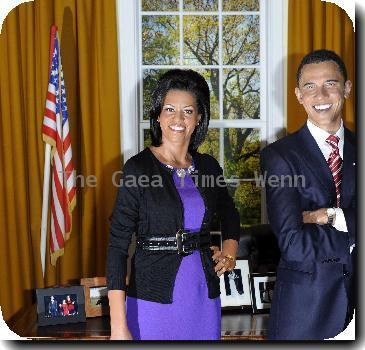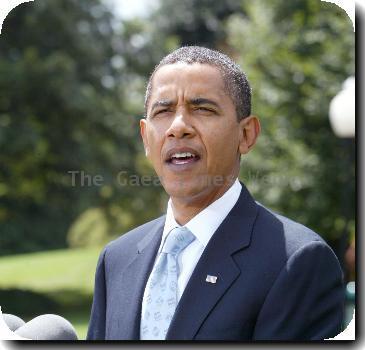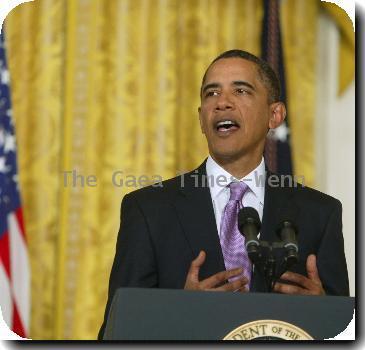INSIDE WASHINGTON: Mine safety officials ignored warnings that case backlog would grow
By Sam Hananel, APFriday, April 23, 2010
INSIDE WASHINGTON: Safety officials ignore backlog
WASHINGTON — Federal officials ignored warnings three years ago that new mine safety regulations would trigger a surge of legal cases that could bog down enforcers. The backlog of cases is now blamed for thwarting enforcement at mines across the country, including the site of a deadly West Virginia explosion.
Despite the predictions of an overwhelming caseload, the head of the Federal Mine Safety and Health Review Commission told Congress in 2007 that he expected the rate of new cases to slow down — and therefore his agency didn’t need more money.
The estimate from the commission’s former chairman, Michael Duffy, that cases would slow to about 3,000 a year turned out to be wildly inaccurate. New cases actually tripled in 2008, reaching nearly 9,000, as mine companies began aggressively contesting violations.
The massive backlog has now ballooned to more than 16,000 cases. Lawmakers and President Barack Obama have accused Massey Energy Co., owner of the Upper Big Branch mine in West Virginia, and other companies of tying up resources with frivolous appeals just so they can avoid tougher enforcement. The explosion at Upper Big Branch on April 5 killed 29.
By filing lengthy legal appeals that last months or years, mine companies can delay a finding of a pattern of violation that could lead to stricter oversight.
The commission — an independent agency — resolves disputes when mine operators challenge the accuracy of violations discovered by inspectors from the Mine Safety and Health Administration.
Questions about the backlog and why the government didn’t act more quickly to address it are sure to come up as the Senate convenes its first hearing on the mine accident next week.
“When that backlog impacts mine safety and stymies the enforcement process, it should become a priority,” said J. Davitt McAteer, former head of MSHA during the Clinton administration.
“These are creative lawyers on the other side and you’ve got to be able to deal with them,” said McAteer, who is heading an independent investigation of the mine accident. “They’ve come up with a tactic and they have every right to challenge the citations under law. What they are going to do is bollix up the system.”
Massey has defended its safety record and says it only disputes violations when there is a valid disagreement. MSHA records show the rate of serious violations last year at the Upper Big Branch mine that required miners to halt work while immediate repairs were made was nearly 19 times the national rate.
Last week, Obama ordered federal officials to work with Congress to “close loopholes that permit companies to shirk their responsibilities.”
But the root of those problems was already becoming apparent back on April 17, 2007, when Duffy was called to a meeting with congressional staff about his commission’s budget request. A House staffer pointedly asked why Duffy wasn’t asking for more money, according to two officials familiar with the meeting. The officials requested anonymity because the meeting was private.
Duffy, who spent a decade as a top lawyer for the National Mining Association before he became the commission’s chairman, said he didn’t expect any surge in cases. His refusals came despite the concerns of other commission staff members and its chief administrative law judge who warned that a tsunami of cases was going to come, according to one official.
The judge, Robert Lesnick, sent at least three memos over the next two years to Duffy pleading for more judges and staff to help handle the load. Lesnick declined to comment.
Later in 2007, the surge in cases began. With rising fines, mine operators began contesting more violations. The Upper Big Branch mine was contributing to the spike, contesting 97 percent of its “significant and substantial” violations in 2007 alone, according to MSHA data.
When Duffy realized his mistake later that year, he asked the White House Office of Management and Budget if he could get a modest budget increase after all. But an OMB official turned him down and said the commission was going to have to learn to live with a bigger backlog, according to an official familiar with the conversation.
Michael McCord, general counsel of the commission, said Duffy was on vacation this week and could not be reached for comment.
“There was concern back then, but no one knew how great the increase was going to be,” McCord said. “We were looking at a budget and trying to get it increased, but not that much happened in 2007 and 2008.”
McCord said there have been discussions about other ways to address the backlog. The commission began work last year on a new rule that would streamline proceedings in simpler cases to cut down on legal filings and hold hearings more quickly. The goal is to free up more time to focus on serious cases. That rule is now weeks away from being proposed, McCord said.
Obama took a swipe at the Bush administration last week when he suggested the lack of action suited the mining industry.
“For a long time, the mine safety agency was stacked with former mine executives and industry players,” Obama said. Now, Obama said, MSHA is run “by former miners and health safety experts.”
The mining industry traditionally concentrates its political campaign contributions on Republicans, whose hands-off philosophy toward government regulation is to its liking. When President George W. Bush ran for re-election in 2004, the industry gave 85 percent of its federal contributions to GOP candidates, totaling $3.7 million.
The 2010 budget request increased funding at the commission for four new administrative law judges to handle cases in addition to the 10 already there. And in this year’s request, the Obama administration asked for four more.
But aside from a bigger budget, the safety agencies under Obama have done little to take corrective actions. MSHA director Joe Main told a House panel at a Feb. 23 hearing that he did not believe “litigating our way” out of this backlog was the best long-term solution. Instead, he said the agency was pursuing reforms to streamline the system, reduce the rate of contested violations and improve consistency in enforcement.
Main said the agency would make changes in how it determines whether a mine shows a potential pattern of violations. Under the current policy, MSHA looks at the number of serious violations at a mine over a 24-month period and uses a formula to determine whether to send a warning letter to a mine.
But the agency can’t count violations until they are final. That gives mine operators incentive to contest them. And MSHA only runs a check for such patterns twice a year, raising questions about whether it is checking often enough.
Following the last pattern check in September 2009, MSHA decided to review and change the process and criteria before running the next check, MSHA spokeswoman Amy Louviere said. Officials began reviewing cases where mine operators had high numbers of serious violations to try to speed up those cases so they are subject to the pattern of violations process.
“A meeting was scheduled to discuss these options, but was canceled when headquarters learned of the explosion at Upper Big Branch Mine,” Louviere said.
Lawmakers have indicated more comprehensive mine safety legislation is in the works. Sen. Jay Rockefeller, D-W.Va., told reporters this week that Congress would probably try to pass a new safety measure before the end of the year, even though the current investigation may not be complete by then.
“I just don’t think we can wait that long,” Rockefeller said.
Associated Press writer Ken Thomas contributed to this report.
Tags: Barack Obama, Explosions, Government Regulations, Industry Regulation, North America, United States, Washington, West Virginia





